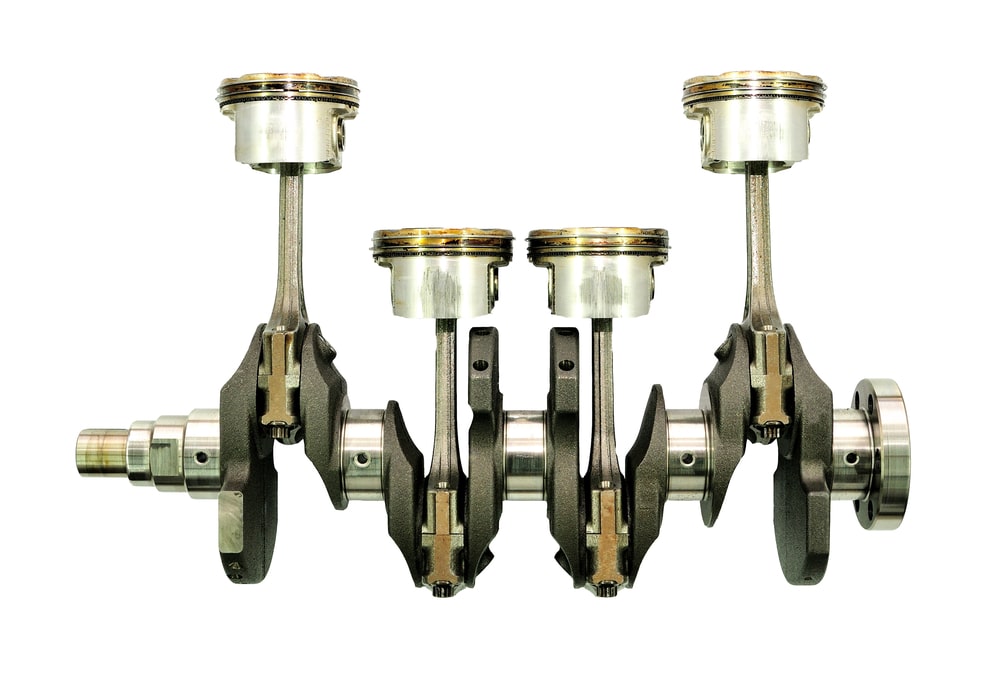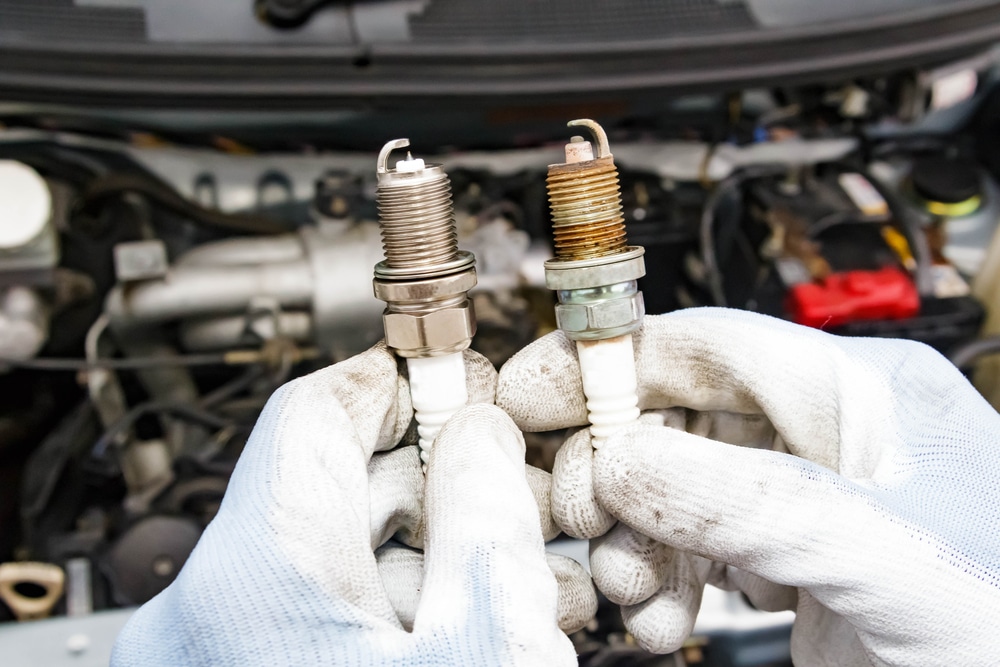Range Rover Multiple Fault Codes
If you own a Range Rover Evoque, you’re probably used to excellent comfort, peak performance and an enjoyable driving experience.
But what happens when your vehicle goes into the notorious limp mode?
Encountering warning messages and limp mode is a sign of a severe issue and it shouldn’t be ignored. After all, limp mode is your vehicle’s way of protecting itself from further damage.
At Fitch Autos, our experts often encounter Range Rover Evoque limp mode issues.
A recent customer arrived at our garage with their Range Rover Evoque trapped in limp mode. The vehicle was accompanied by distressing warning messages on the dashboard.
To make matters worse, the vehicle had not long returned from having a service (which had been performed by one of the main Range Rover dealerships).
While it’s far from ideal, our Range Rover experts were prepared to tackle such a problem head-on. With decades of experience and a comprehensive 15-step diagnostic process at our disposal, we can solve any problems your Land Rover has during the first visit.

The Faults We Discovered
When the client brought their Range Rover to our garage, our experts could clearly see the vehicle was in the dreaded limp mode.
The vehicle had the following issues:
- The engine was rough idling
- Illuminated engine management light
- Oil level warning
- Limp mode
With all of these symptoms showing at once, it clearly indicated a serious issue that needed a deeper inspection.
Focusing on the engine, which appeared to be the primary cause, our expert technicians initiated the inspection with a complete diagnostics test. These codes allow us to precisely identify the reasons behind the Range Rover’s performance issues.
Our diagnostic tests revealed SEVEN fault codes, indicating various issues. Talk about a nightmare situation.
The fault codes present were:
- P0341-91: Camshaft position sensor circuit malfunction
- P06BE-1E: Cylinder 2 glow plug issue
- P0299-84: Turbo under boost
- P006A-84: Manifold absolute pressure flow correlation
- P246B-00: Vehicle conditions not suitable for regeneration
- P049C-00: EGR B excessive flow detected
- 2BAE-02: NOx levels exceeding the norm
The number of issues present left our experts shocked that the vehicle made it to our garage. What’s even more surprising is that the main Range Rover dealership didn’t spot these issues.
However, now that our specialists have this information, they could develop a plan to solve the Range Rover’s issues.
While the technical jargon and fault codes might seem cryptic to most people, our team, with its extensive expertise in Land Rover engine diagnostics and repairs, could use it to point them in the right direction.
Our technicians conducted a series of targeted tests to pinpoint the root cause of each issue:
- They started by verifying the engine’s timing accuracy, ensuring it was precisely synchronised.
- The cam sensor underwent examination for any physical damage and was tested for proper functionality.
- The cam lobes were inspected to check for any signs of wear or damage.
- Glow plugs were tested to confirm whether they received adequate power during operation.
- To assess their condition, the electrical circuits of the glow plugs and a visual inspection of the wiring were conducted.
- Lastly, the turbocharger was inspected for any external or internal wear or damage.
Once these tests had been completed, they revealed the engine’s timing was misaligned, disrupting the communication with the Range Rover Evoque’s onboard computer. This misalignment affected the critical timing for fuel injection, valve opening and exhaust gas release. These are essential functions if you want your diesel engine to run efficiently.
This discovery explained why the client’s Evoque had many issues plaguing the vehicle.
Further tests revealed that the cam sensor was in good condition and functioning correctly without any damage. Similarly, the cam lobes, critical for the accurate timing and opening of exhaust and intake valves, were found to be in normal condition.
However, the story changed when it came to the glow plugs.
These components, crucial for igniting air during cold starts, were found to be malfunctioning.
An examination of the turbocharger revealed additional problems that could severely impact engine performance and efficiency. Given its role in utilising exhaust gases to enhance air intake and power output, any issue with the turbocharger could lead to significant engine damage.
Our specialists called our client and advised that replacing the glow plugs and turbocharger was necessary to restore their vehicle’s peak performance.
At Fitch Autos, you’re always kept in the know from beginning to end. We only begin working on your Range Rover when you say so. You’re in complete control.
Engine Repair Procedure for the Range Rover Evoque
After identifying all the issues, our technicians sourced the necessary replacement parts and proceeded with the Range Rover Evoque repair.
When it comes to replacement parts, we only use genuine Land Rover or high-quality alternative parts on your vehicle, ensuring you get the quality needed for optimal performance.
The repairs we performed included:
- Installing a new timing chain kit to correct the timing and enhance engine performance.
- Replacing the turbocharger to optimise exhaust gas flow and boost engine power as needed.
- Swapping out all four glow plugs ensures the vehicle operates smoothly, especially during cold weather.
- Changing the oil and oil filter to provide optimal cooling and lubrication following the new timing chain installation.
Additionally, we performed a thorough cleaning of the Diesel Particulate Filter (DPF), a critical yet often overlooked aspect of vehicle maintenance.
While the DPF was not the primary issue, its cleaning signifies our commitment to comprehensive vehicle care.
Cleaning the DPF is a complex task that demands specialised knowledge, and while other garages might skip this step, we always go above and beyond to keep your vehicle in the best condition.
Once all the issues were addressed, our experts ran another diagnostic test to confirm that they had solved all the problems.
Following a successful test drive, where no additional fault codes were detected, we were pleased to return the vehicle to our customer. They even got better than dealership value and were delighted to see their Evoque running like new.


In Summary
When a recent client brought their Range Rover Evoque to Fitch Autos, it was suffering from a worrying “limp mode” issue.
Fortunately, our Land Rover experts had dealt with similar issues before and knew the steps to take to get the client’s vehicle back in working condition.
During the initial assessment, we discovered seven error codes…yes, SEVEN.
To make matters worse, the vehicle had only been serviced a few weeks prior by the main Range Rover dealership.
Some of the issues included:
- Malfunctioning timing chains
- Inoperative glow plugs
- Damaged turbochargers
- And a much-needed oil change
Our experts used their extensive Range Rover knowledge and our 15-step diagnostic process to solve each issue during the first visit.
The client was pleased to have their vehicle back in complete working order and drove away with a smile.
Need help with your Range Rover Evoque? Call Fitch Autos today. Our team can solve any issues your vehicle may have.


